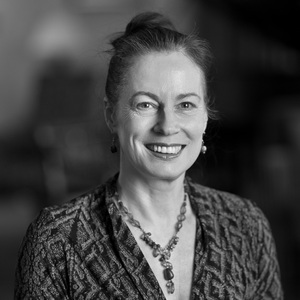Diversity on company boards – from tokenism to genuine change

The composition of company boards is changing.
One survey found that directors from underrepresented groups increased their share of board seats at companies on the Russell 3000 index (which tracks the largest 3,000 publicly traded companies in the US) from 14% in 2020 to 17% in 2021. The percentage of women directors at Russell 3000 companies also increased, jumping from 24% in 2020 to 27% last year.
It’s clear from these figures that there have been shifts in who gets approached to join boards. But the picture is not without its problems and genuinely increasing diversity in corporate boardrooms is going to take some time: In the US, only a limited number of board seats become available each year, and most of those appointments are made to white men and women. Figures are that at the end of 2021, eight out of ten board members were white, and six of ten were white men.
For corporates across the world, the message is clear: we can and must do more to create a more inclusive, equitable workplace.
In 2019, the Harvard Law School Forum on Corporate Governance flagged board diversity as one of the global trends that companies will need to watch if they are to stay on the right side of institutional investors, pension fund managers and proxy advisors. Their latest edition has elevated this to urgent status, as evidence mounts that diverse organisations outperform others and as stakeholders lose patience with tardy implementation, believing that 2022 will see an unprecedented level of ‘scrutiny and public oversight of board and directors … beyond anything directors have experienced before’.
AltoPartners’ experts shared their tips on how to optimally structure your board with the right mix of skills, experience and diversity to lead in a changing world:
It starts at the top
Boards with successful diversity, equity and inclusion (DE&I) initiatives know that responsibility for the creation of a diverse team cannot be relegated to a line function. “Too many companies leave DE&I to human resources to implement. Management who truly appreciate that diversity is a strategic lever for commercial success know that it is far too important to risk it becoming an exercise in optics,” says Joo-Lee Aw, managing partner The People at Work/AltoPartners Shanghai & Singapore.
Sonal Agrawal, co-founder and managing partner Accord India / AltoPartners India and global chair of AltoPartners agrees: “It starts and ends at the top. The CEO and the Board must talk and walk the agenda and consciously craft a culture that accepts and celebrates differences and ensures equality by recognising and paying DE&I board members on equal basis with their counterparts.” This includes having a succession pipeline of DE&I board and C-suite candidates.
It means being willing to be challenged – and to do some hard work
The board and leadership team needs to be comfortable challenging the organisation to do better. “Diversity at the top stimulates frank discussions about potential biases in areas such as succession planning, recruitment, engagement and retention, performance and development practices. For example, a board member that I know asked at her first board meeting, ‘Why are there no women on the company’s high potential list?’,” says Lauren Smith, managing director Diversified Search Group /AltoPartners USA.
Rather than facing such questions from new board members, boards and leadership teams need to take a long hard look at themselves. “Savvy boards interrogate which voice is missing and then take steps to fill the gap,” says Judee von Seldeneck, founder and chairman Diversified Search Group /AltoPartners USA. That means asking questions about the composition of your leadership team: Did you all go to the same school? Do you all live in the same neighbourhood? If yes, then something needs to change!
Von Seldeneck notes that differences can be self-evident (gender, age, race and ethnicity, religion/belief, marital status and socioeconomic status) or they could be more inherent: educational background, training, sector experience, organisational tenure, even neurodiversity, such as introverts and extroverts, or people on the spectrum.
Be in it for the long term
Being successful at DE&I means playing a long game. DE&I is closely tied to sustainability. “Leaders have a choice to ignore it and keep trying to clone themselves and their teammates, or they embrace the fact that a changing world needs an HR operating model to match. Ultimately, DE&I is about risk management and surviving into the future,” says Nathalie Deroche, partner at Leaders Trust / AltoPartners France.
Pay attention to detail
There are also a myriad of ways to make a person feel unwelcome, says Caroline Rofe-Woess, partner AltoPartners Austria. Holding meetings late in the afternoon or before office hours can exclude women who are responsible for taking and fetching children to school; having no designated space for breast-feeding women to express milk; or making a person feel uncomfortable about their gender identity or sexuality.
Corinne Klajda, managing partner Accord Group Polska / AltoPartners Poland, says it is important to pay attention to body language. “People show their discomfort. When it comes to making women comfortable in board room and exco settings, you may want to see if any of these apply to you: Do all meetings begin with an analysis of the week’s sporting activity? Is locker room chat encouraged? Do you allow men to routinely speak over or interrupt women? And the biggest turn-off of all: never assume that it is the job of female colleagues to take minutes or pour tea unless that is their job description.”
Keep track of your progress
A board’s willingness to implement the deep changes outlined here is only half the equation. If there is no mechanism for measuring progress, there’s no way of tracking whether change attempts have been successful. As Agrawal observes, companies need to actively interrogate the gap between what they think they’re doing right and the actual experiences of people on the board (and in the organisation, for that matter).
“What doesn’t get measured, doesn’t get done”, says Mpho Nkeli, director Search Partners International (SPi) / AltoPartners South Africa. She suggests first looking at the diversity of the board’s panel of recruiters and executive search firms - “The more diverse, the higher the chance of getting diverse candidates,” she says.
Other questions to ask:
- How specific are the search briefs to your recruiters and search partners?
- How many of them are specific to search for diverse candidates only?
- How many diverse candidates feature on your short-lists?
No tokenism
If diversity graduates feel that the company is simply fulfilling a quota, it is unlikely that they will see any room for personal growth and development, says Agrawal. No board will want to be guilty of this scenario, described by BoardSource’s vice president of leadership initiatives and education Jim Taylor, who discovered in an interview that the interviewer had no clear idea about the value that Taylor could offer. “I was being recruited because - and seemingly only because - I was Black and my board membership would support the organization’s board diversity goals.”
That means that boards seeking out diverse talent should be prepared to be open in their processes and be aware of their own unconscious biases. As Julie Garland-McLellan, Board Consultant, AltoPartners Australia, observes, it is inevitable that unconscious bias will be involved in hiring decisions and boards need to know that aspiring board members will be scrutinising them: “It’s important for boards to view that scrutiny as a positive thing. It means that candidates are actively engaging with the process, and the likelihood is that the board will find the right person for the role.”
Ultimately, transforming a board into one with a vibrant, effective and diverse team of people depends on finding the right fit, both for the board and the prospective candidate. In our next article, AltoPartners board practice experts share their tips for prospective board candidates.

Sonal Agrawal
Managing Partner AltoPartners Bangalore, AltoPartners Delhi+NCR, AltoPartners Kolkata, AltoPartners Mumbai
Lauren E. Smith
Co Practice Leader, Board AltoPartners Miami
Judee von Seldeneck
Founder & Chairman AltoPartners Philadelphia
Nathalie Deroche
Partner AltoPartners Paris
Corinne Klajda
CEO, President of the Board AltoPartners Warsaw

